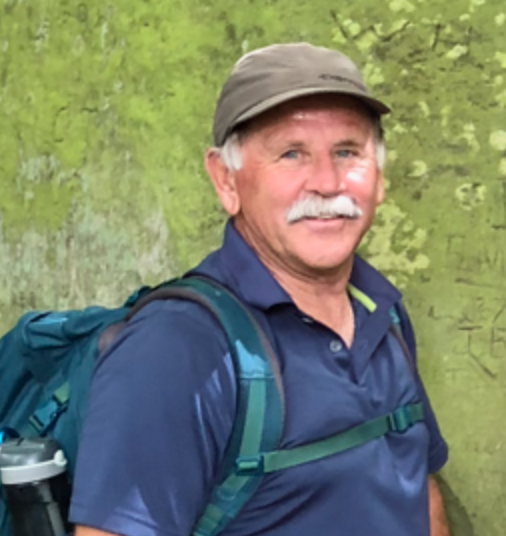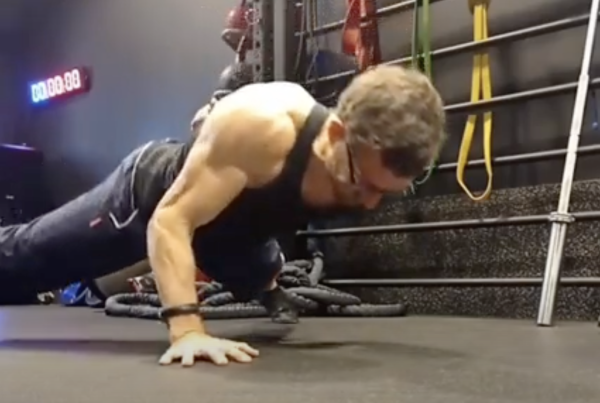Over the past 12 months, the fitness industry has never faced a more uncertain time. With quarantining, social distancing and self-isolation the most effective methods for limiting the COVID-19 virus, no fitness professional has escaped its consequences. We have all lost clients, faced fitness centre closures and financial ruin, lost business to informal walking and/or cycling opportunities and home exercise equipment purchases, suffered loss of income or suspension of trading, just to name a few. The consequences of these restrictions have led to an increase in sedentary behaviour and a reduction in formal moderate-to-vigorous exercise. It has been reported that, in the UK, males are spending 78 days per year sitting, while females spend 74 days, of which 64 days was watching TV or the equivalent for 30 hours per week. During the pandemic, 38% of the population of UK, USA, Canada and Australia have gained weight, of which 71% gained in excess of 2.5kg.
As a means of survival in this new business world, we have created virtual experiences, promoted a hybrid club model, emphasised outdoor classes, restricted numbers in groups and generally attempted to maintain the status quo by offering existing programmes in a different mode or in a different environment. We essentially have attempted to maintain our existing client base by offering the same or similar programmes. Prior to COVID-19, our industry looked healthy on the outside with increased memberships, more fitness centres emerging and generally healthy prospects for the future.
However, from the inside we were still facing poor penetration rates (17% in UK), poor retention rates (losing >50% after 12 months and 70% after 18 months) and poor participation rates (<40% participating in more than two or three sessions per week).
Over the past 20 years, we have made little impact on obesity levels, fitness penetration levels (<2.5% globally), inactivity-related diseases (now the fourth biggest killer worldwide) and the global control of heart disease and metabolic syndrome, attracting sedentary groups, attracting older adults (<8%), older adults with chronic conditions, communities with disabilities and adults living with disabilities. Our focus has generally been on the motivated 18-44 years demographic (83% of members), weight loss and improved appearance. Our industry has been very successful in motivating a relatively healthy, low-risk group to improve their fitness and wellbeing.
One reason for our limited market focus has been the lack of direction in accessing, prescribing and delivering evidence-based guidelines for other population groups and the reluctance of some registering bodies to allow us access to potentially higher risk groups. This has limited our scope to attract new markets, new intervention programmes and contribute to the much-needed increase in global physical activity levels.
Until now!
In November 2020, the World Health Organisation delivered its Global Action Plan on Physical Activity with the first updated WHO Guidelines on Physical Activity and Sedentary Behaviour since 2010, with the purpose of reducing global physical inactivity levels by 15% by 2030. These guidelines were developed in extensive consultation with over 50 of the world’s leading exercise researchers, who reviewed thousands of research articles by ranking them according to quality and relevance to improving physical activity levels and were verified by over 400 feedback contributions from scientists, practitioners and the general public. The aim of these guidelines is to encourage physical activity participation in all people of all ages and abilities to be physically active to improve their health and wellbeing. The populations that the guidelines apply to are children from five to 17 years, adults from 18 to 64 years, older adults >65 years, pregnant and post-partum women, adults and older adults with chronic conditions (diabetes, hypertension, etc,) and children and adolescents (five to 17 years) with chronic conditions.
Our industry now has the unique opportunity to follow evidence-based guidelines that are now universally accepted, to develop new physical activity interventions that will follow the new WHO recommendations and to attract a much larger market than we have ever been able to reach by practising diversity and inclusion. The fitness industry is at the coal face of physical activity and should take the lead in applying these guidelines by adding new movement opportunities to existing programmes rather than modify existing programmes that will not necessarily attract new demographic groups.
Jim Teatum, CEO of Global Business Systems, states, “It should be more than just a question of changing the platform. Times demand that we broaden the offering, the message and, more importantly, the audience. Now is the time for our industry to change with the times. Start selling more than just fitness, which in any case is a hugely misunderstood term. To many it is just another word for hurt and pain – always a tough sell! Now, at this time of enhanced health awareness from the public, it is probably prudent to revisit and modify the existing health club revenue and marketing model. If the future of fitness is, as many predict, based upon integration with the medical community, then we need to establish credibility and accountability.”
Dr Fiona Bull, head of physical activity at WHO and a leading author of the final report, suggests in September 2018’s Health Club Management that we need to retrain staff so they are upskilled to work with “non-traditional gym goers”. Dr Bull says, “There is such an opportunity to get below the surface of the gym stereotypes, but generally the fitness industry has not been overly interested. What is on offer at the moment doesn’t work for the majority of the population. I am intrigued to know why the market doesn’t respond. Many vulnerable people go to the gym and are put off, and this is one of the biggest barriers to enticing them back into activity – they already decide it isn’t for them.”
Some key messages for fitness professionals from the new WHO Every Move Counts Physical Activity and Sedentary Behaviour Guidelines include:
- It is better to do some physical activity irrespective of the intensity or mode of exercise. Light-intensity activities can also produce appreciable health benefits.
- All domains of physical activity are regarded as legitimate modes of exercise, including active travel, home activities, gardening, leisure sport and activities of daily life.
- Sedentary behaviour has now been recognised for the first time as an independent risk factor in the presence of moderate-to-vigorous exercise and should be reduced throughout the day.
- There is no minimum duration for physical activity participation, as was the 10 minutes’ rule that was previously prescribed.
- Target times are now between 150 and 300 minutes of moderate physical activity and 75-150 minutes of vigorous physical activity, which is double the previous recommendations.
- Time in excess of 300 minutes of moderate physical activity can improve health outcomes. “More is better.”
- Two sessions per week of strength for all population groups will enhance health outcomes.
- For the first time, the WHO Physical Activity Guidelines are inclusive of all sub population groups not previously considered that will benefit from increased participation in all forms of physical activity.
- The focus has shifted from exercise to a public health issue that is part of daily living.
- In general, the new guidelines have shifted from specific exercise training to include more active living opportunities.
By embracing the new WHO Physical Activity and Sedentary Behaviour Guidelines in combination with their existing programmes, the fitness industry:
- becomes part of a global initiative to reduce physical inactivity
- gains credibility with the leading global health agency that was previously unattainable
- addresses new market segments
- accesses cutting-edge, evidence-based information
- reviews new movement opportunities for new members as well as existing members
- creates an improved public health profile
- becomes a leading voice in physical activity promotion
- creates a brand awareness across different non-government and government agencies
- creates a stronger foundation that can withstand any additional COVID waves and promote COVID-19 recovery and provide increased immunity against any infectious diseases.
Remember that, in an ever-increasing sedentary world, “more of the same is not enough”.
For more information on the WHO Guidelines on Physical Activity and Sedentary Behaviour, download the document at HERE








